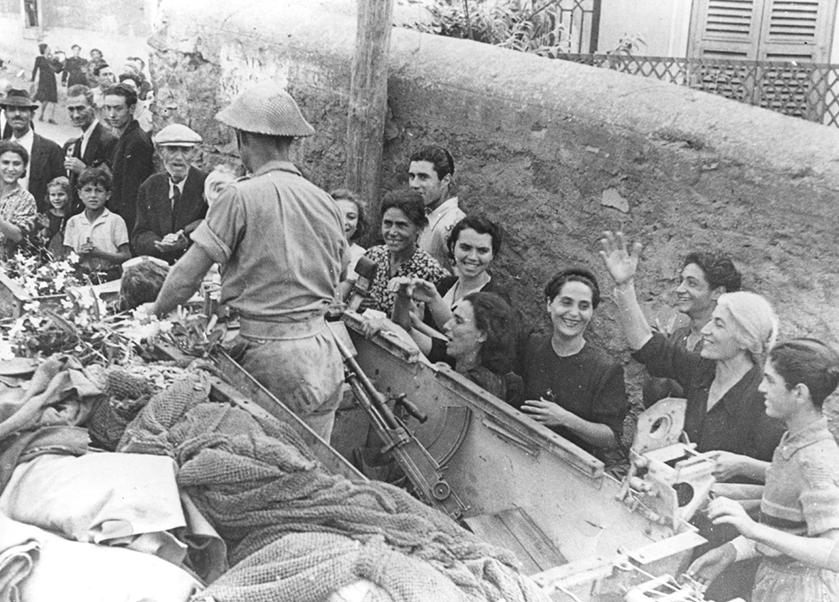
World War II Sicilian Campaign: British Drive North to Messina

Figure 1.--Here are British troops finally entering Catania (August 5). Catania was a port city half way up the Sicilian coast toward Messina. This German defenses in the foothills south and west of Catania had been the primary roadblock that bogged down the British drive to Messina. Once Catania fell, the race was on to Messina.
|
|
The British Eighth Army was to drive north along the eastern coastal road and seize Messina. The coastal road was the shortest most direct route to Messina. The British took Vizzini just north of the bridgehead as planned. The British began to encountering siffening German resistance as they attempted to drive north along the coast--the direct route to Messina. The Germans thus focused much of their forces in this area. An important objective was the Plain of Catania with its airfields. The Plain of Catania is the largest and most important plain in Sicily. It was, however, separated from the British landing beaches by rugged foothills in which the German built a defensive line. When Montgomery hit the German defenses, rather than ask he Americans to strike the Germans, he requested that Alexander allow the British units to move westward in an effort to encircle the Germans instead of attacking them directly. This was, however, into the zone initially designated for the Americans. Alexander granted the request and Enna, a city located in central was shifted from the American to the British zone. Enna towers over the surrounding countryside. The Germans based their defense of the island on opposing the British drive on Messina along the coastal road and rugged terraine of central Sucily. The terrain was mountainous, ideal for defensive action. Historians vary on what occurred after the British attack north bogged down. Catania half way up the coast toward Messina and at the foot of Etna proved to be the major roadblock. Catania was repeatedly bombed by the Allies, at the onset of the War (June 1940). Some 100,000 of its inhabitants were evacuated to the neighboring villages long before the allies landed. The Germans used the rugged foothills leading to the Plain of Catania to good advantage and proved to be a major obstacle. The British Eighth Army found itself bogged down in protracted fighting to take the Plain of Catania and in the Nebrodi Mountains northwest of Mount Etna. Montgomery insistence on moving west deprived the Eighth Army of American support. The result was heavy losses. Montgomery was always sensitive on the issue of battlefield casualties. He began to fume about Patton's highly publicized adances and light losses to the west. The drive north took much longer and resulted in higher losses than Montgomery had nticipated. The Eighth Army finally approached Vatani (July 23). But the Germans continued to resist for two more weeks. The Germans finally evacuated Catania (August 5). That broke th front wide open. The British entered the city and began a race to Messina.
CIH -- WW II

Navigate the CIH World War II Section:
[Return to Main Sicilian campaign page]
[Return to Main Sicilian page]
[Return to Main Italian campaign page]
[Return to World War II European campaign second phase page]
[About Us]
[Aftermath]
[Biographies]
[Campaigns]
[Children]
[Countries]
[Deciding factors]
[Diplomacy]
[Geo-political crisis]
[Economics]
[Home front]
[Intelligence]
[Military forces]
[POWs]
[Resistance]
[Race]
[Refugees]
[Technology]
[Totalitarian powers]
[Bibliographies]
[Contributions]
[FAQs]
[Images]
[Links]
[Registration]
[Tools]
[Return to Main World War II page]
[Return to Main war essay page]
[Return to CIH Home page]
Created: 7:03 PM 2/1/2017
Last up dated: 7:03 PM 2/1/2017



